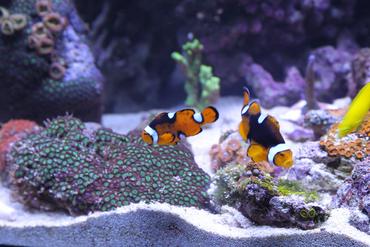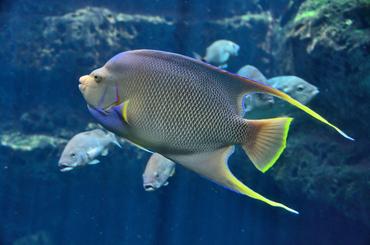BRISTLE WORMS IN THE MARINE TANK

Updated
Dealing with pests is an inescapable part of cultivating a marine tank. If you want to handle a problem with bristle worms effectively, take the time to learn the basics about them.
If you are going to cultivate a reef tank, it is inevitable that at some point during your time as an aquarium hobbyist you are going to have to deal with marine pests or aquarium fish disease. One such pest you may have to deal with is bristle worms. These pesky creatures are difficult to get rid of and they can cause a wide variety of problems in the marine tank. If you are dealing with a bristle worm problem, or if you simply want to prevent such a pest from affecting your tank, you would do well to learn the basics about what they are and where they come from before you try to treat the problem. Once you understand the basics about bristle worms you will be better equipped to deal with the problem and to make sure it doesn’t recur in the future.
What Are Bristle Worms
Bristle worms are a group of polychaetes, a type of soft-bodies annelid. These creatures are named for the myriad setae, or bristles, which cover the sides of their bodies – these bristles may be hollow or barbed and they can break off when they come into contact with the bodies of fish or other tank inhabitants. Some species of bristle worm carry venom in their bristles which can cause irritation upon contact. In addition to these bristles, bristle worms also have powerful jaws that they use to feed. Most bristle worms are scavengers, eating bits of organic debris such as algae growths, plankton and dead organisms, but some will actively feed on corals.
Depending on the species, some bristle worms will wander throughout the tank in search of food while others build tubes or burrows and wait for prey to come to them. One of the most dangerous types of bristle worm is the fireworm (Hermodice carunculata) – these creatures can grow up to 12 inches long and they actively feed on the tissues of various corals and anemones. Fireworms also possess hollow bristles filled with poison that act as defensive organs.
Possible Causes
The most common way for bristle worms to enter the marine tank is through live rock. If you purchase live rock on line or from your local pet store, be sure to inspect it thoroughly before you place it in your tank. Live rock that is shipped is typically dried or covered with damp newspaper to protect the rock during the shipping process. In either case, many of the bristle worms living in the rock will protrude from their holes or move along the surface of the rock – this will make it very easy for you to remove them by hand using a pair of tweezers. When removing a bristle worm from live rock it is important to remove the entire worm – if part of the worm breaks off and is left in the rock it can sometimes regenerate. To prevent this from happening, grasp the worm as close to the base as possible and slowly work it free from the rock surface.
Treatment and Prevention
If you are experiencing a problem with bristle worms in your saltwater tank you may need to set a trap to catch them. One method of trapping bristle worms involves using a piece of PVC pipe and drilling several holes through it along the length of the pipe. After turning out the lights in your tank at night, put a piece of fresh shrimp inside the pipe and plug both ends before sinking it in the tank. Over the course of the night, the bristle worms in your tank will seek out the shrimp, crawling through the holes in the pipe and getting trapped. In the morning, all you have to do is unplug one end of the pipe and dispose of the bristle worms inside.
Another way to trap bristle worms, particularly small worms that may be difficult to trap using the pipe method, is to use a piece of food wrapped in a nylon stocking. Simply take a piece of fresh shrimp or scallop and wrap it in a nylon stocking before sinking it in the bottom of your tank at night. When the bristle worms approach the object to feed on it, their bristles will get stuck in the nylon and they will be unable to escape, thus making it easy to remove them in the morning. Over the course of several weeks, either of these methods can help to drastically reduce the bristle worm population in your tank.
If you are dealing with a severe bristle worm infestation, the aforementioned methods may not be enough. It may be necessary to siphon your aquarium substrate or to scoop out the substrate entirely and remove the worms by hand. These methods can be very time consuming but, in some cases, they are the only way to ensure that you can really remove the worms from your tank. Another option is to add a bristle worm predator like an arrow crab or certain wrasses to help control the population.































































































